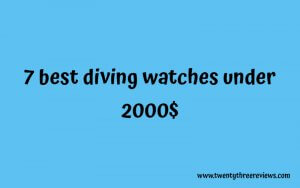Contents
Tips on how to write a resume

Your resume should clearly, concisely, and strategically convey your skills and experience to make an interviewer interested in you. Your resume should highlight your abilities as well as your work experience and other assets. Resumes are used to show what you can get expertly and display what you can provide for supervisors. Occupations can be offered unexpectedly. A cutting-edge and refreshed resume is fundamental for an effective pursuit of employment.
Resume writing tips
There are numerous normal resume organizes the resume you decide to utilize ought to mirror your own capabilities, encounters and capacities. It is possible to have multiple formats of your resume tailored to the positions the job you’re applying to. Here are some key resume making tips to help you in straightening out and arranging your resume.
Telling Your Story

1. Try not to place all on There
Your resume should not include every single job you’ve been able to list on it. Your resume ought to be considered not as a full rundown of your work history yet as a business device that means to make you the best possibility to be recruited. For each resume you send out, it’s important to focus on the achievements and abilities that are the most relevant to the position that you’re applying for.
2. Keep a Master List, everything being equal
Because you’ll need to be able to swap different details in and out based on the position you’re applying for, make an outline of your resume or the master resume on your personal computer. There, you save any data you’ve ever put on a resume.
3. Place the greatest objects “Around the top”
In the world of marketing, “above the fold” refers to the information you can look at on the front of a newspaper folded (or in this digital age, before scrolling down on a site); however, in essence, it’s the first impression you get of the document. Regarding resumes, this implies that you should guarantee that your most significant victories and accomplishments are shown on the highest point of your resume. This segment that the recruiting chief sees first and will go about as a justification for individuals to peruse on.
4. Place the Objective Statement
an objective section that can make sense would be when planning to make an important career shift and have to present at the outset the reason why your work experience isn’t matched to the gig you’re applying for. If not, why would you? Think about whether a summary statement is the best option for you. Or remove it completely to make room on creating the remainder of your resume impressive.
5. Keep it (Reverse) sequential
There are various ways to arrange the information in your resumes–such as the functional or combination resume, but the classic reverse sequential is the most effective option. Avoid the skill-based resume if it’s not necessary for your particular situation. Managers who hire you might be curious about what’s on your resume.
6. Remain it to a Page
Two (or more) (or greater!) one-page resumes can be a highly debated issue however the main point is this: you need the information to be clear and keeping the page to one is a great strategy to achieve this. If you’re able to prove you have relevant and valuable knowledge, experience and qualifications to display in more than one resume page, take advantage of it. But what if you could convey the same information in a smaller space? Do. If you’re having trouble to write your resume, read these suggestions to cut your content or consult an experienced designer to figure out ways to organize your resume to take up smaller spaces.
7. Think about an Online Supplement
Is it difficult to present your entire story in one document, or do you want to provide pictures from your career? Instead of trying to make your resume be all-encompassing you can, make sure to include the most crucial aspects of the document and then include a hyperlink to your website that lets you delve deeper into the things that make you the perfect candidate.
Designing

1. Keep it straightforward
We’ll discuss how to be innovative so that you stand out in less than a short time. In any case, what is the major guideline of a decent resume arrangement and plan? Create an easy resume for hiring managers to read by choosing a font size between 10-12 and leaving plenty in white spaces on your page. You can choose different fonts or typefaces in your title, resume’s headers, as well as the companies with which you’ve worked. However, make sure to make sure that you keep it the same. Whatever resume layout you select, the primary focus should be readability for the hiring manager.
2. Cautiously Stand Out
Innovative resumes such as videos, infographics, presentations, or graphics could set your resume apart, but you must utilize them with care. On the off chance that you’re applying to a customary business, don’t go excessively wild notwithstanding, you are at freedom to incorporate a few great components of plan or shade to make it stick out. Whatever you do you choose to do, ensure that you’re prepared to invest the time, effort, and effort to make it amazing.
3. Make Your Contact Info noted
It’s not necessary to include the address of your resume any longer. However, you must include a contact number and an email account for a professional (not the address you use for work!) along with other places where the hiring manager could look you up on the internet such as your LinkedIn profile or Twitter handle.
4. Plan for Skimmability
It’s been reported that hiring managers don’t take enough time reviewing every resume. Therefore, help them gather the most information they can and in as short a time as they can. These small formatting adjustments can make a massive impact.
5. Find support From a Professional
Are you aware that designing skills aren’t your best ability, but do you want your resume to appear gorgeous? There’s no reason not to get assistance, so you should consider hiring an experienced resume designer. It’s arguably the most crucial document in the job hunt. Therefore, it’s important to get it correct!
Work Experience

1. Keep it current, Keep it applicable.
By and large, it is prescribed to incorporate the latest 10 to 15 years of your expert experience and incorporate just the applicable encounters to the gig you’re applying for. Make sure to relegate your resume’s space following significance.
2. No Relevant skill? No fears!
Do not be worried if you have an experience that meets the criteria. Focus your resume on the relevant and transferable abilities, as well as any other related academic or side work, and ensure that you pair your resume with a convincing cover letter that tells the story of the reasons you’re perfect for the position.
Education
1. Experience First, Education Second
If you’re not a recent college student, make sure you plan your education before your previous experience. Your latest occupation is more applicable and vital to your odds of landing the position you need than where you went to school.
2. Likewise, ensure its Reverse Chronological
Typically, it is best to outline your academic background by listing your latest or most advanced level first, then working backwards in chronological order. Notwithstanding, assuming your more seasoned courses are more applicable to the position you are applying for, make a point to list that first to draw the pursuer’s advantage.
3. But leave out the Dates
Try not to list your graduation dates. The analyst thinks often more about whether or not you have the degree than when you acquired it.
4. Highlight Honors
Assuming you have moved on from school with good grades, make a note that you got it. Despite the fact that you don’t need to specify your GPA, don’t spare a moment to show that you went to a distinctions school of your college.
5. Involve Continuing or Online Education
Do not be afraid to include ongoing education or professional development or online classes in your section on education even if it seems somewhat light. Online courses are the standard these days, and your interest in them could be an indication of your assurance and excitement to acquire the skill that you need for your work.
Gapes and Other Sticky Resume Situations
1. Kill the Short-Term Jobs
On the off chance that you remained at a (non-brief) work for just only months, consider dispensing with it from your resume. As shown by The New York Times’ livelihood tutor, leaving a particularly brief position or two off your work history shouldn’t cause any damage, to the degree that you’re clear as for your involvement with whatever point asked in a social occasion.
2. Don’t Try to Get Cute
Try not to endeavor to design ways of filling in the gapes on your resume. For instance, if, for example, you had to leave the workplace to take care of your children and have a family, don’t include the experience of your parents on your resume. Instead, it would help if you said: “adeptly managed the growing pile of laundry”. Although parenting can be an extremely demanding and challenging job, like others, most decision-makers will not look at this section of your resume very seriously.
Finishing Touches
1. Proofread
It’s a given that you should ensure your resume is error-free and free of errors. Also, don’t trust grammar and spelling check for your resume. Have your companions or relatives inspect the resume for you (or look for guidance from the editorial manager concerning how to further develop your resume).
2. Keep it as a PDF
Assuming you’re emailing your resume, guarantee that you make a point to send a PDF, not a .doc. So your painstakingly arranged designing will not be wrecked out when the recruiting administrator peruses it on their PC. To ensure it doesn’t appear sloppy the moment you send it out, Google’s head of HR Laszlo Boock suggests, “Look at it both in Google Docs and Word, and then add it to an email, and then open it. It tends to be utilized for instance.”
3. Frequently restore it
Make time each quarter to review your resume and make adjustments. Have you assumed new tasks? Have you acquired new techniques? Include them. Assuming your resume is refreshed habitually, you’re ready to snatch the possibility that introduces itself
Conclusion
It would help if you prepared your resume in that it creates an impression upon first glance that you’re an ideal candidate for the job you’ve applied to. A prospective employer only takes about 10-15 seconds to decide on an interview when looking at your resume. If your resume was professionally composed, you are bound to be one of the candidates who are shortlisted regardless of whether you possess the aptitude or not, but you’ll get a call; otherwise, your resume will be an item in either a recycling bin or dustbin.
The initial document you draft for your resume might not be the most impressive, as it is changing and improving over time. Therefore, you should keep changing and improving the resume after the initial draft. Keep its various versions with you. It goes without saying that resume tips are very important for a candidate to get a job.
Read HostGator Website Builder review here.







